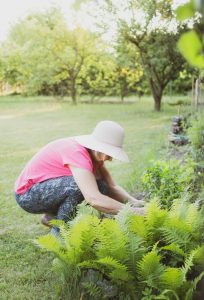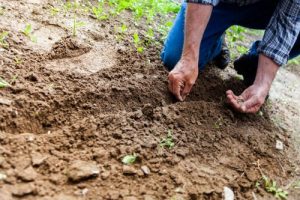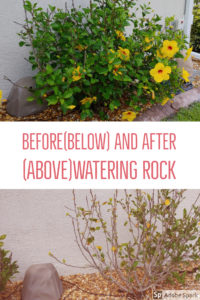December Gardening Tips
As the harvests come to an end and the weather turns cold, you find yourself mourning your now slower growing and dormant gardens that kept you entertained and well fed through the warmer months. A gardener’s work, though, is far from over. There are plenty of December garden projects you can busy yourself with to get you through until next season. When the weather doesn’t permit you to get your hands dirty, cozy up by the window, sip some cider for inspiration, and put down on paper your own December garden checklist of duties that encourage you to get excited about the year to come! Start a journal by keeping track of first freezes and a checklist of tasks to complete before spring.

Winterizing Vegetable and Flower Beds
Around here, flowerbeds look pretty bleak by mid-November to early December. If you, too, are expecting the first frosts, its time to bring in your potted plants. If your pots are too big for a green house or inside your home, try grouping them together in the most sheltered corner of the yard. Wrap pots in bubble wrap to further protect against frosty roots. Plants don’t like cold feet, either!
Pruning
Once your most vulnerable plants have been secured, you can begin pruning your perennials. By dead heading old blooms and removing browning leaves, your garden will appear well maintained and not abandoned. This also helps prevent early onset of disease or mold from extra moisture due to frost. You should always check leaves for sign of illness and keep them out of your compost pile. Cut back grasses to prevent disease. Shrubs and trees, however, should be pruned in late winter. Keep leaves raked and stray branches trimmed, but save any major cutting until spring. Leaving the tops of perennial flowers helps to protect the plant during the winter.
Fertilizing
On its less frigid days, December is a great month to give your soil some love. Start by loosening up the top soil to aerate. Then, restore nutrients to your soil by adding a layer of compost. Once you’ve mixed your soil and compost, lightly water in any extra fertilizer (like fish emulsion). A light layer of mulch will help protect plants from getting too cold. (It’s not my idea of a cozy blanket, but the plants seem to like it okay!)

Planting
Popping a few bulbs in before the first frost and placing ivy or a hardy winter bush into pots is about all the December garden planting that can be done. If you plan on adding to your garden, December is a great time to create additional beds. Then, sit back and give thanks for the harvest you received and the time of rest you can enjoy.
Winter Lawn Care
If you’re in a milder area of the country, you may still be mowing the lawn in early December. As the weather increasingly cools, it is privy to raise the height of your blade. By doing this, you’ll protect your taller grass will protect the roots through hard frosts and keep from dying in sensitive areas. Additionally, keeping the yard raked and free of heavy leaves will keep your lawn consistently healthy rather than having dead patches. Collect some fallen leaves to add to your compost pile. Be sure to check for spotting, first. For all you gardeners in the harsher winter regions, avoid walking on frozen grass as it can cause damage.

Greenhouse/Shed Maintenance
As you check another day off the December garden calendar and finding yourself with less to do (or too cold to be outdoors), pay homage to the tools that make life in the garden more enjoyable. Check out the following December gardening tips:
• Wash all shovels and rakes with a mild soap and water. You can use steel wool for stubborn grime.
• Replace any damaged handles on tools.
• Wash, sharpen and oil all shears and trowels. The oil will prevent rusting.
• Replace or mend damaged harvesting baskets
• Sweep out storage rooms and dust wipe down shelves.
This is a great time to take inventory of things you need for next spring as well as winterize your irrigation systems. Water hoses should also be disconnected and stored flat. This prevents things from crawling inside and clogging as well as keeps the rubber or plastic from becoming hard and cracking.

Drip Irrigation
Winterizing drip irrigation systems can be a daunting task – especially in the cold. I can take the cold. I can take the wet. I cannot stand being cold and wet! Do you feel me?! If you aren’t sure of how to properly winterize your drip systems, here you go:
1. Turn off the water source and remove any sort of timer or system head.
2. Drain tubing lines by opening end caps and letting excess water drip out. Dry thoroughly with an air compressor.
3. Wipe down and carefully store in your storage room.
Because they are light weight and easy to store, watering rocks are a preferred option for drip irrigation. More cost effective and aesthetically pleasing, watering rocks are great for large area beds and in gardens. Each watering rock system includes a five-gallon rock, fifteen feet of drip line and six adjustable drippers. Fill the rocks with ease every two or three days and pat yourself on the back! Drip irrigation saves you both time and money. The drippers slowly nourish plants at their precise location making fertilizing more efficient, as well. Watering rocks are great for distributing additives along with water to nourish your plants evenly and effectively. In the winter, these are easy to pick up, dust off and roll up the tubing. They store easily on a shelf or you can leave the rocks out in the garden to enhance the look during the more-bare season. In the spring, easily connect and lay out your tubing without fuss. For more informative articles and ideas visit our website at https://www.watering-rocks.com.
